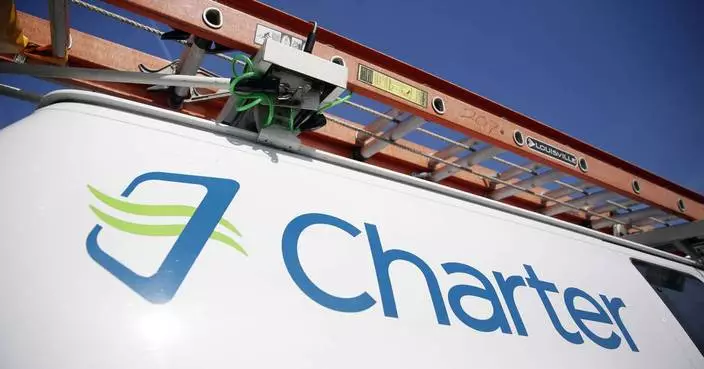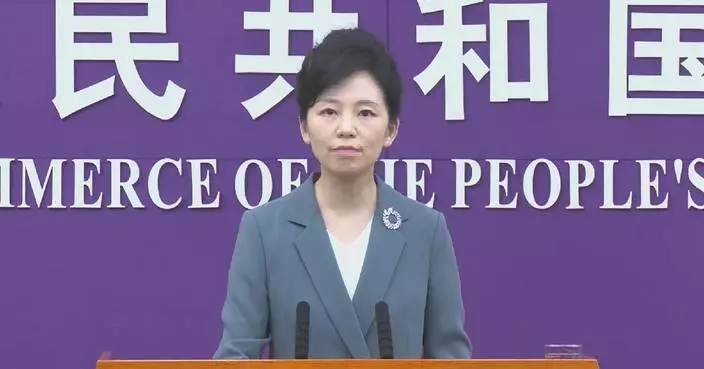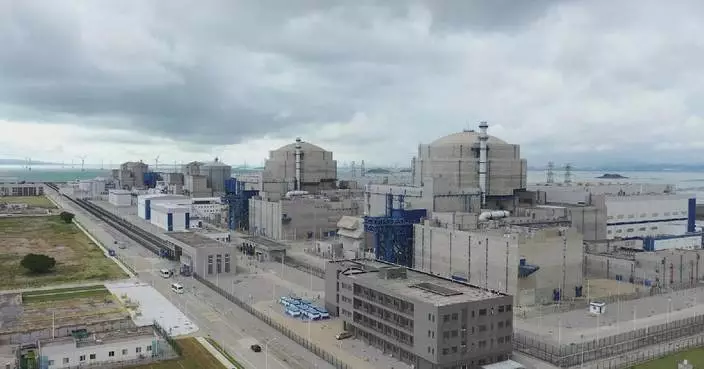AUSTIN, Texas (AP) — Texas lawmakers on Thursday passed a $1 billion education bill that allows families to use public money to pay for private school tuition, a major victory for school voucher proponents nationwide that was cheered on by President Donald Trump.
The measure won final approval from the state Senate and now heads to Republican Gov. Greg Abbott, who had muscled the GOP-majority Legislature to pass the bill and has vowed to quickly sign it into law.
“This is historic school choice legislation,” Abbott said in a statement posted on X. “Thanks to the dedication of our lawmakers, Texas families will soon have education freedom!”
More than 30 states have implemented some sort of voucher program in the U.S., and about a dozen states in recent years have launched or expanded programs that make most students eligible. Texas' version will be among the largest in the nation and is seen as a major victory for proponents who hope to push a similar effort on the federal level.
For decades, the push in Texas had failed in the face of stiff resistance from Democrats and rural Republicans who called it a threat to public schools in a state that now has more than 5 million students in public classrooms.
But supporters gradually gained ground and Abbott, a three-term governor, threw his political muscle behind it in the 2024 elections by backing numerous candidates who would support it. That effort built the majority support the issue needed after decades of failure.
Trump played a key role in getting the measure through a critical state House vote a week ago, when he spoke with a group of Republican lawmakers on a speakerphone call and urged them to approve it.
The program in its first year would be capped at $1 billion and used by up to 90,000 students, but it could grow to nearly $4.5 billion per year by 2030. The money can be used for private school tuition or costs for home-schooling and virtual learning programs. Families could get up to $10,000 each year per student under the program, and a student with disabilities would be eligible for as much as $30,000 per year.
Supporters of the measure say the vouchers can help parents get their children out of poor-performing public schools and create competition that will force public schools to improve.
“The one thing that is missing from our education process that has really made America great is competition,” said Republican state Sen. Bob Hall.
Critics, however, argue it will weaken public schools by draining money and resources and giving them to private schools, who can have selective enrollment and may not operate under some of the same rules.
And they argue it will put money in the pocket of wealthier families already sending their children to costly private schools.
The bill is “not about ‘school choice,’” the Senate Democratic caucus said in a statement. “It's about public subsidization of private schools' choice. It's a step backwards for Texas.”
The issue is not settled among Republicans nationwide. On Monday, North Dakota's Republican Gov. Kelly Armstrong vetoed a private school voucher program in that state, saying the bill fell “far short of truly expanding choice as it only impacts one sector of our student population.”
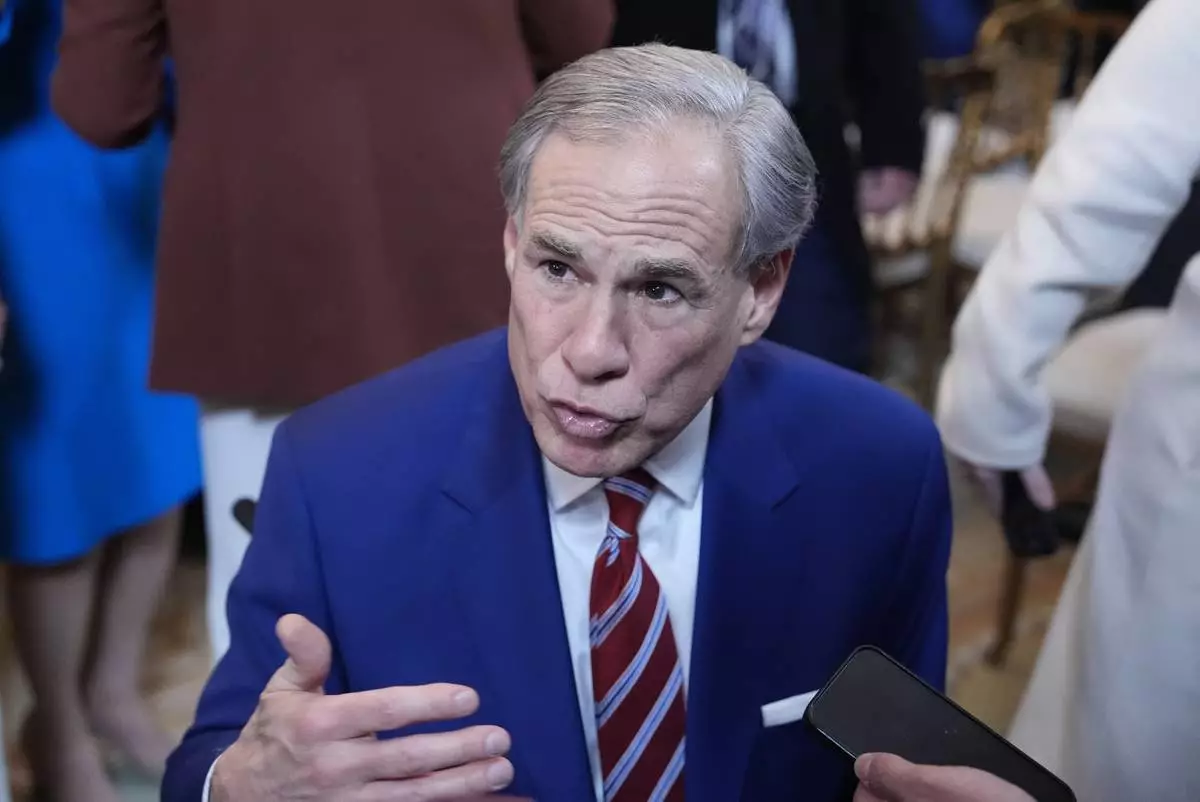
FILE - Texas Gov. Greg Abbott talks in the East Room of the White House, Feb. 5, 2025, in Washington. (AP Photo/Alex Brandon, file)
New Jersey Transit train engineers went on strike, leaving train terminals quiet for Friday's rush hour and an estimated 350,000 commuters in New Jersey and New York City to seek other means to reach their destinations or consider staying home.
Groups of picketers gathered in front of transit headquarters in Newark and at the Hoboken Terminal, carrying signs that said “Locomotive Engineers on Strike” and “NJ Transit: Millions for Penthouse Views Nothing for Train Crews.”
Friday’s rail commute into New York from New Jersey is typically the lightest of the week. In New York, some commuters from New Jersey said they could not work remotely and had to come in, taking busses to the Port Authority bus terminal in Manhattan.
David Milosevich, a fashion and advertising casting director, was on his way to a photo shoot in Brooklyn. At 1 a.m. he checked his phone and saw the strike was on.
“I left home very early because of it,” he said, grabbing the bus in Montclair, New Jersey, and arriving in Manhattan at 7 a.m. “I think a lot of people don’t come in on Fridays since COVID. I don’t know what’s going to happen Monday.”
The walkout comes after the latest round of negotiations on Thursday didn’t produce an agreement. It is the state’s first transit strike in more than 40 years and comes a month after union members overwhelmingly rejected a labor agreement with management.
“We presented them the last proposal; they rejected it and walked away with two hours left on the clock," said Tom Haas, general chairman of the Brotherhood of Locomotive Engineers and Trainmen.
NJ Transit CEO Kris Kolluri described the situation as a “pause in the conversations.”
“I certainly expect to pick back up these conversations as soon as possible,” he said late Thursday during a joint news conference with New Jersey Gov. Phil Murphy. “If they’re willing to meet tonight, I’ll meet them again tonight. If they want to meet tomorrow morning, I’ll do it again. Because I think this is an imminently workable problem. The question is, do they have the willingness to come to a solution.”
Murphy and Kolluri planned a Friday morning news conference.
A few blocks from the Port Authority bus terminal, the NJ Transit train terminal was quiet, with an NJ transit worker in an orange hoody on hand to warn riders it was closed, Signs read: “service suspended.”
The South Amboy train station, an express stop on the NJ Transit rail line, was vacant. But the Waterway ferry that began service only 18 months ago from a waterside launching point that’s a 10-minute walk from the train station was busier than usual for its 6:40 a.m., 55-minute nonstop trip to Manhattan.
The ferry runs once an hour during the morning and evening commutes. With about three dozen people aboard, more than half the seats in the ferry’s lower deck were empty.
Murphy said it was important to “reach a final deal that is both fair to employees and at the same time affordable to New Jersey’s commuters and taxpayers.”
"Again, we cannot ignore the agency’s fiscal realities,” Murphy said.
The announcement came after 15 hours of nonstop contract talks, according to the union.
NJ Transit — the nation’s third-largest transit system — operates buses and rail in the state, providing nearly 1 million weekday trips, including into New York City. The walkout halts all NJ Transit commuter trains, which provide heavily used public transit routes between New York City’s Penn Station on one side of the Hudson River and communities in northern New Jersey on the other, as well as the Newark airport, which has grappled with unrelated delays of its own recently.
The agency had announced contingency plans in recent days, saying it planned to increase bus service, but warned riders that the buses would only add “very limited” capacity to existing New York commuter bus routes in close proximity to rail stations and would not start running until Monday.
However, the agency noted that the buses would not be able to handle close to the same number of passengers — only about 20% of current rail customers — so it urged people who could work from home to do so.
Earlier, even the thread of a strike caused travel disruptions. Amid the uncertainty, the transit agency canceled train and bus service for Shakira concerts Thursday and Friday at MetLife Stadium in New Jersey.
The parties met Monday with a federal mediation board in Washington to discuss the matter, and a mediator was present during Thursday’s talks. Kolluri said Thursday night that the mediation board has suggested a Sunday morning meeting to resume talks.
Wages have been the main sticking point of the negotiations between the agency and the Brotherhood of Locomotive Engineers and Trainmen that wants to see its members earn wages comparable to other passenger railroads in the area. The union says its members earn an average salary of $113,000 a year and says an agreement could be reached if agency CEO Kris Kolluri agrees to an average yearly salary of $170,000.
NJ Transit leadership, though, disputes the union’s data, saying the engineers have average total earnings of $135,000 annually, with the highest earners exceeding $200,000.
Kolluri and Murphy said Thursday night that the problem isn’t so much whether both sides can agree to a wage increase, but whether they can do so under terms that wouldn’t then trigger other unions to demand similar increases and create a financially unfeasible situation for NJ Transit.
Congress has the power to intervene and block the strike and force the union to accept a deal, but lawmakers have not shown a willingness to do that this time like they did in 2022 to prevent a national freight railroad strike.
The union has seen steady attrition in its ranks at NJ Transit as more of its members leave to take better-paying jobs at other railroads. The number of NJ Transit engineers has shrunk from 500 several months ago to about 450.
Associated Press reporters Cedar Attanasio and Larry Neumeister in New York, Hallie Golden in Seattle and Josh Funk in Omaha, Nebraska, contributed to this report.
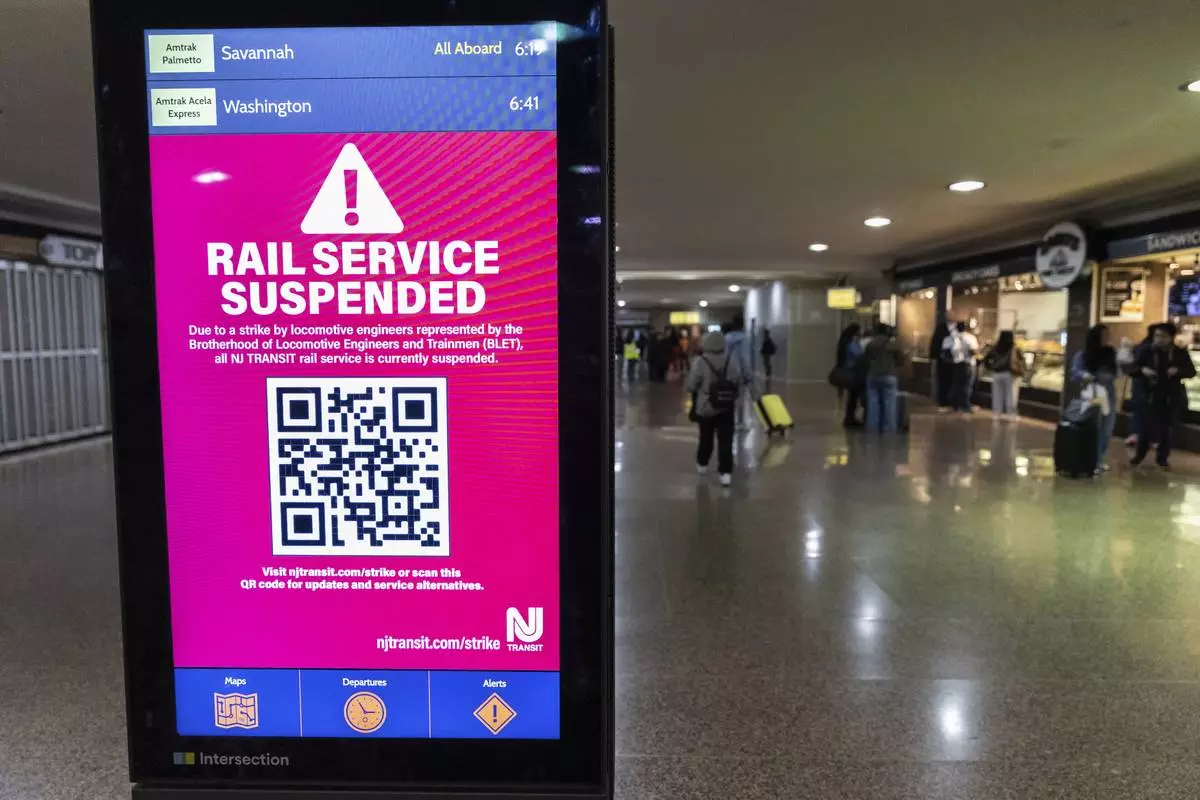
An information screen informing commuters of the rail service suspension, due to the strike by Union members from the Brotherhood of Locomotive Engineers and Trainmen, inside Newark Penn Station on Friday, May 16, 2025 in Newark, New Jersey. (AP Photo/Stefan Jeremiah)
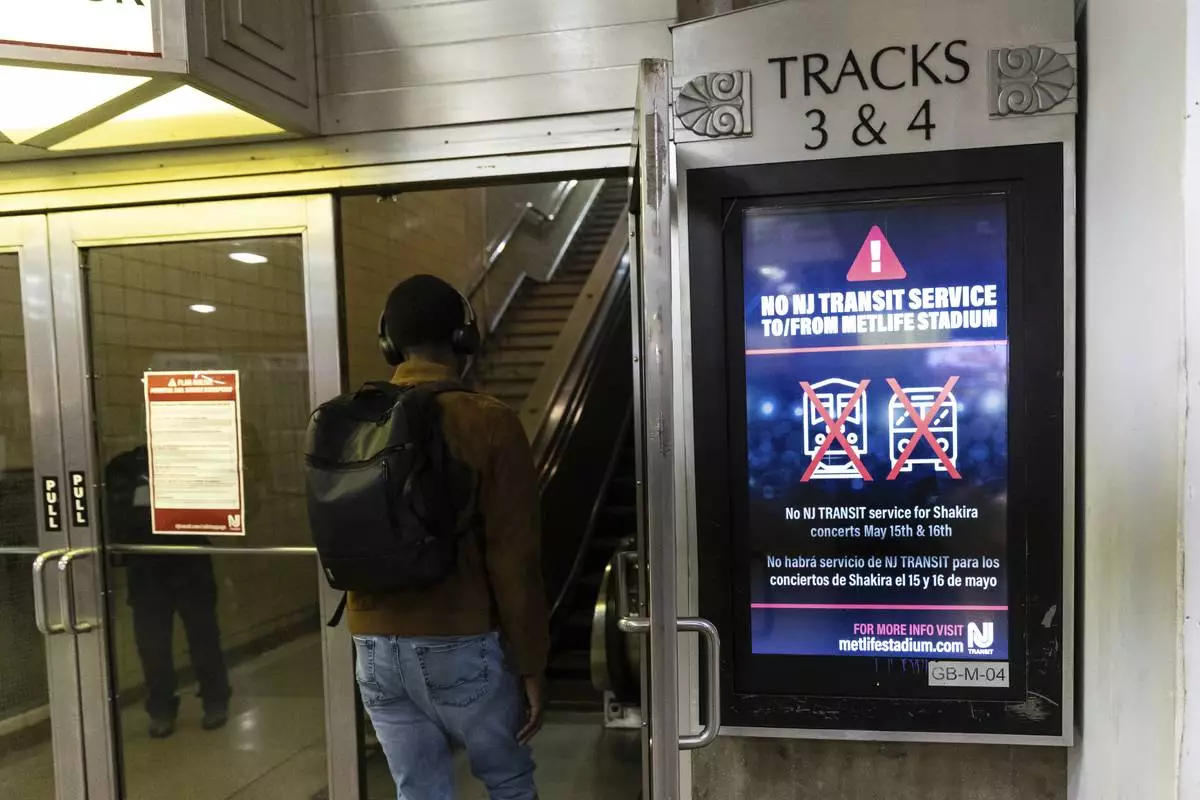
An information screen informing commuters of the rail service suspension, due to the strike by Union members from the Brotherhood of Locomotive Engineers and Trainmen, inside Newark Penn Station on Friday, May 16, 2025 in Newark, New Jersey. (AP Photo/Stefan Jeremiah)
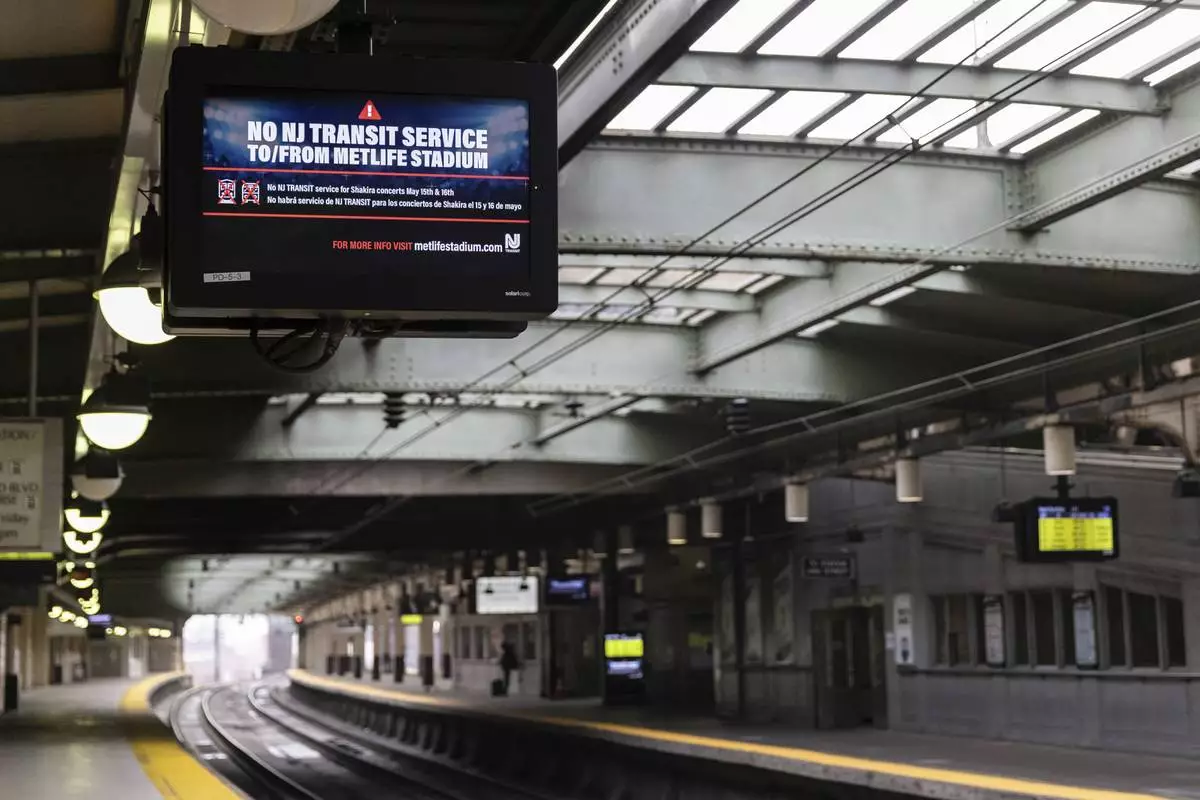
An empty PATH train platform with an information screen informing commuters of the rail service suspension, due to the strike by Union members from the Brotherhood of Locomotive Engineers and Trainmen, inside Newark Penn Station on Friday, May 16, 2025 in Newark, New Jersey. (AP Photo/Stefan Jeremiah)
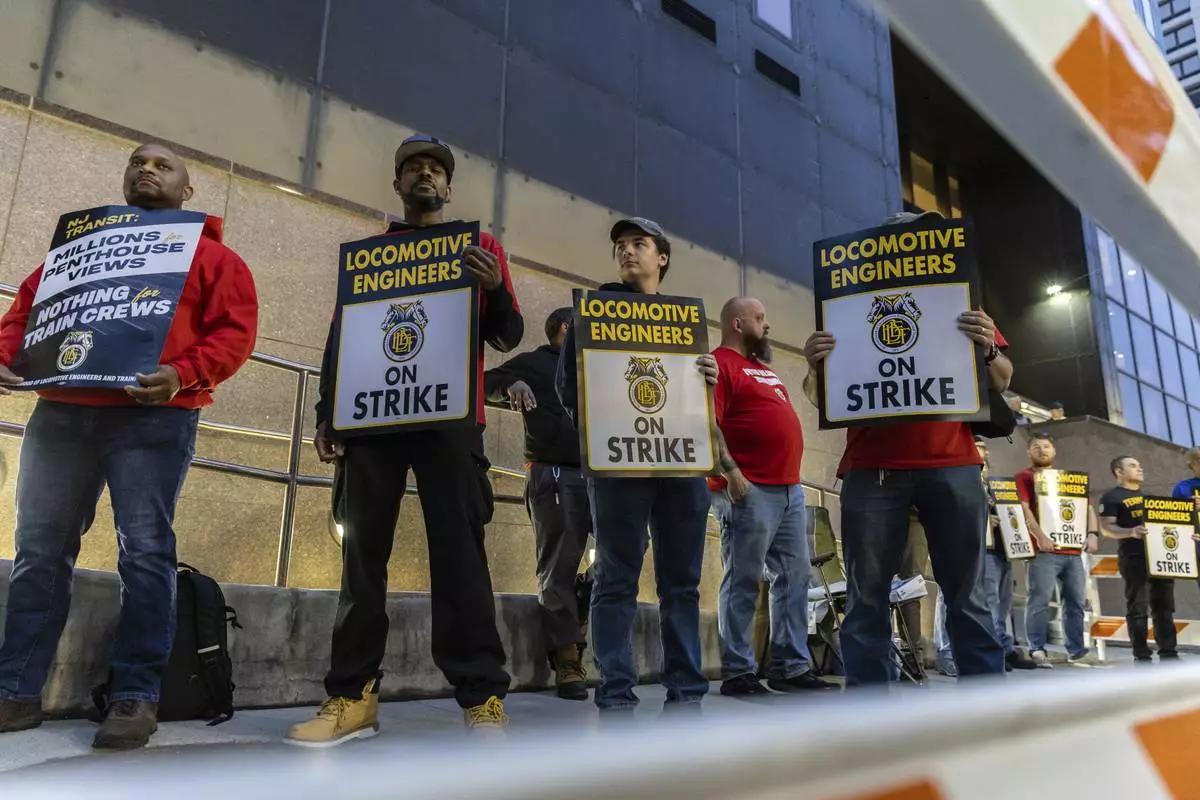
Union members from the Brotherhood of Locomotive Engineers and Trainmen form a picket line outside the NJ Transit Headquarters on Friday, May 16, 2025 in Newark, New Jersey. (AP Photo/Stefan Jeremiah)
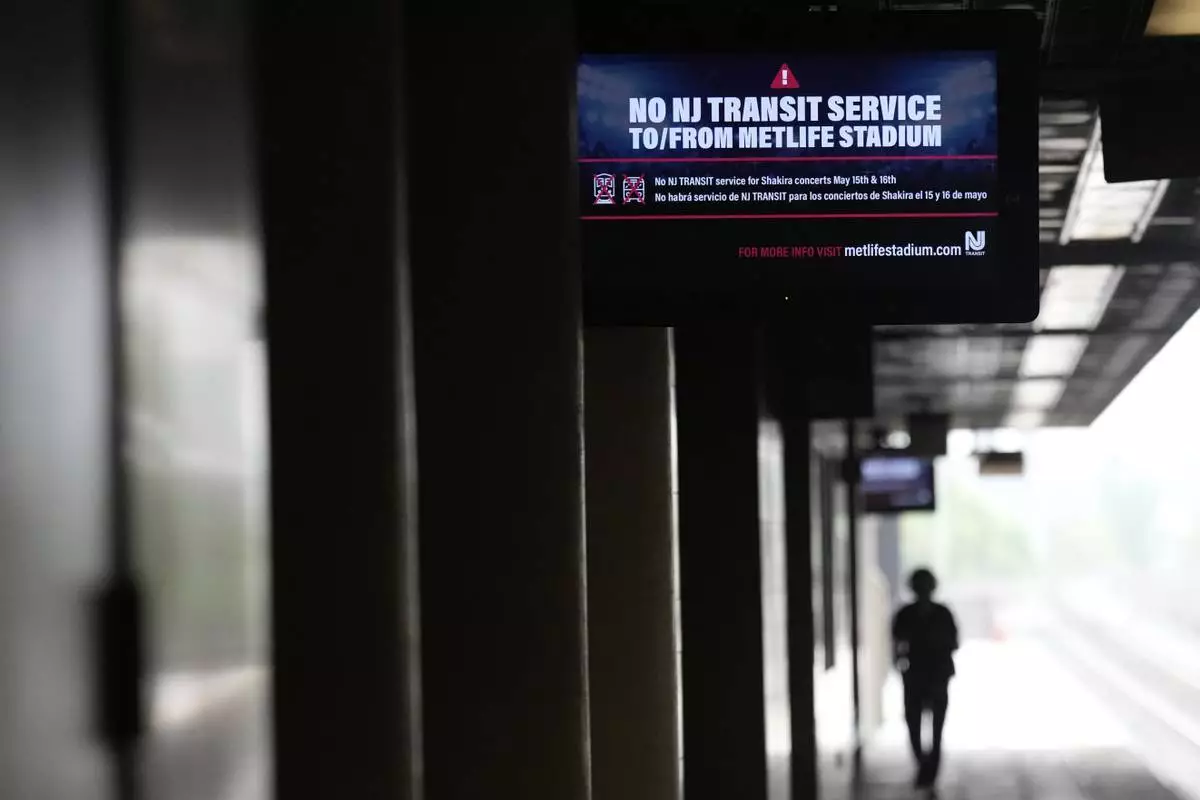
An electronic display advises commuters of NJ Transit service disruptions at the Secaucus Junction station in Secaucus, N.J., Wednesday, May 14, 2025. (AP Photo/Seth Wenig)
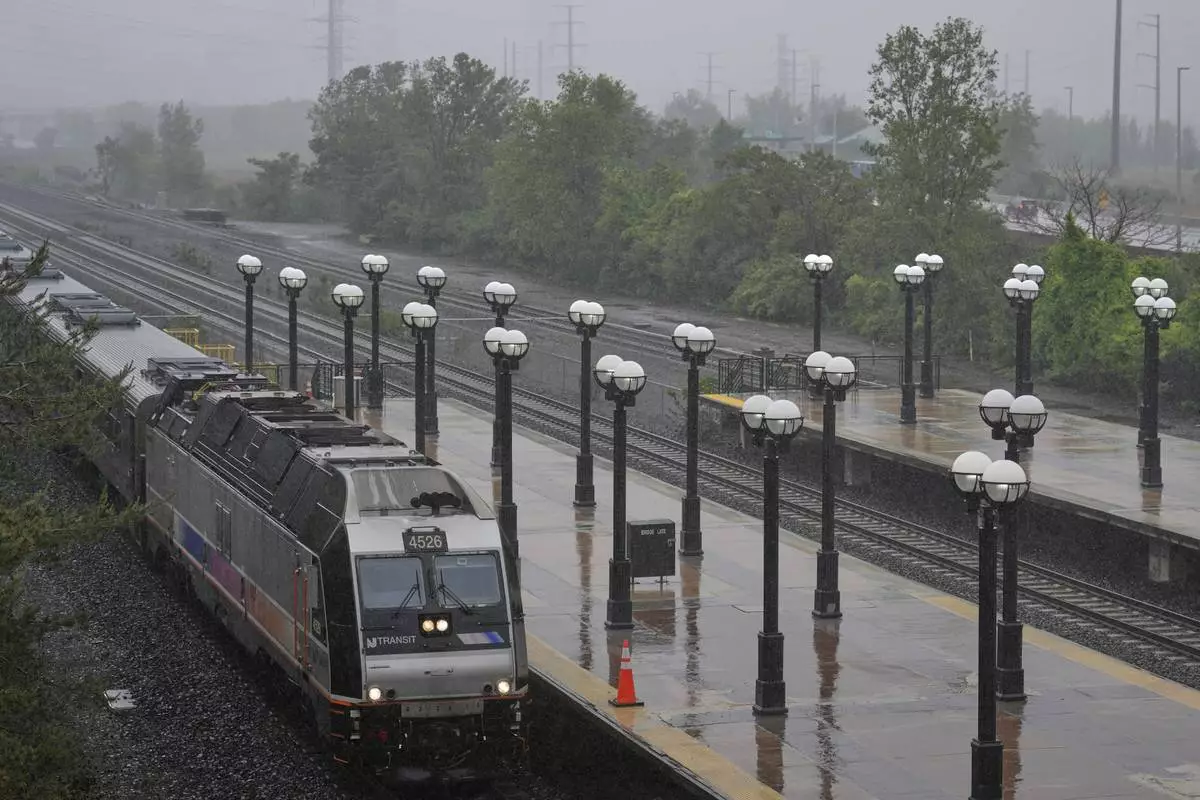
An NJ Transit train pulls into the Secaucus Junction station in Secaucus, N.J., Wednesday, May 14, 2025. (AP Photo/Seth Wenig)
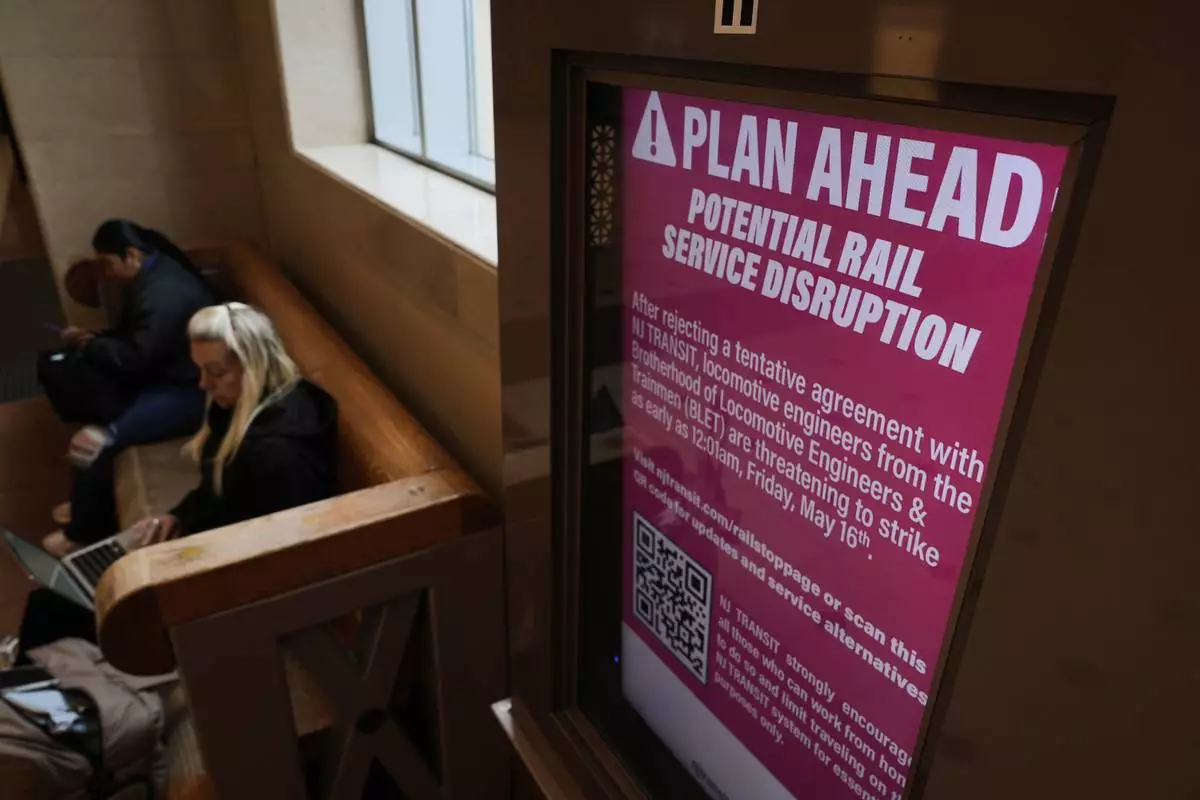
An electronic display advises commuters of potential NJ Transit service disruptions at the Secaucus Junction station in Secaucus, N.J., Wednesday, May 14, 2025. (AP Photo/Seth Wenig)
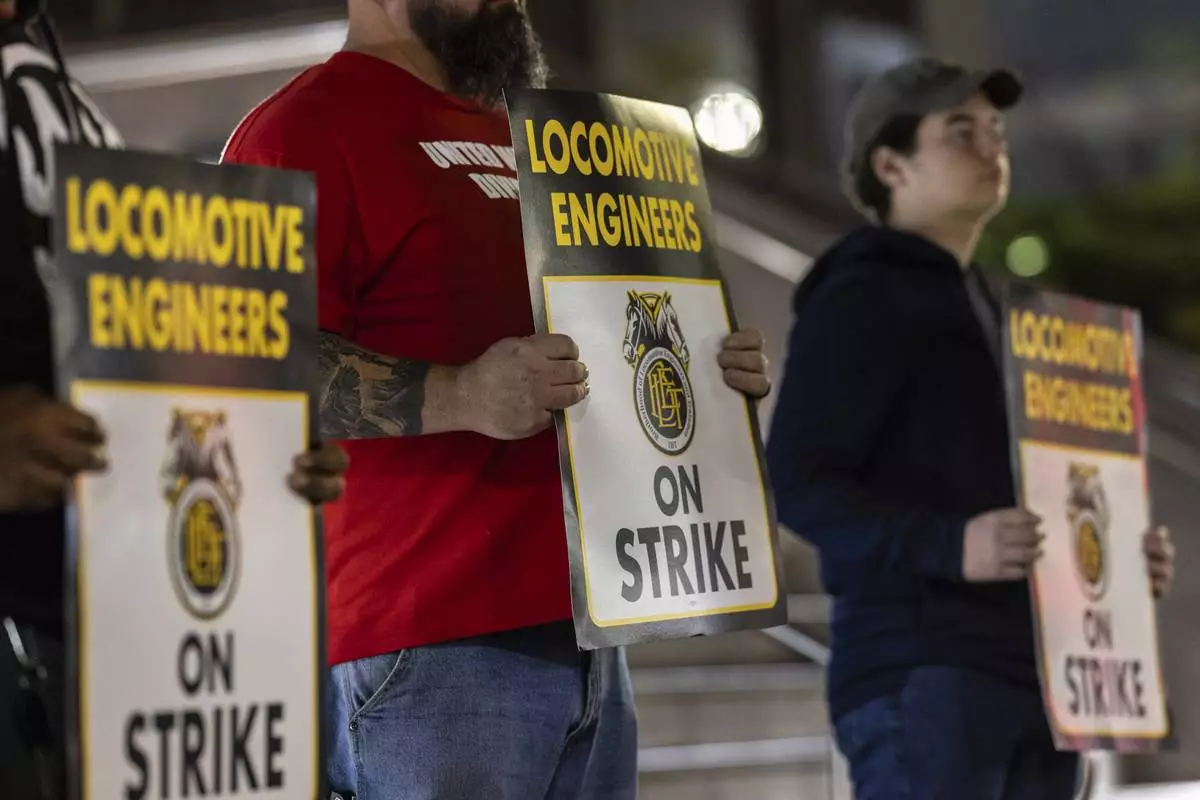
Union members from the Brotherhood of Locomotive Engineers and Trainmen form a picket line outside the NJ Transit Headquarters on Friday, May 16, 2025 in Newark, New Jersey. (AP Photo/Stefan Jeremiah)
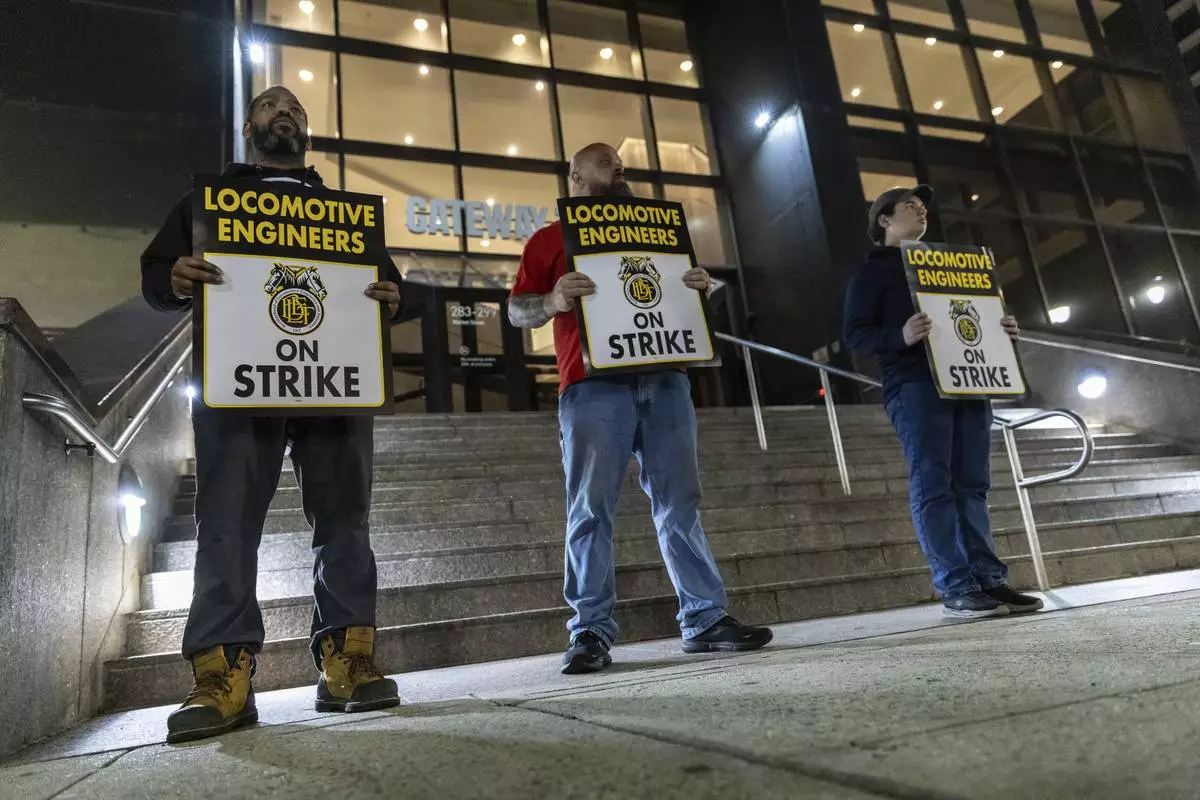
Union members from the Brotherhood of Locomotive Engineers and Trainmen form a picket line outside the NJ Transit Headquarters on Friday, May 16, 2025 in Newark, New Jersey. (AP Photo/Stefan Jeremiah)


















